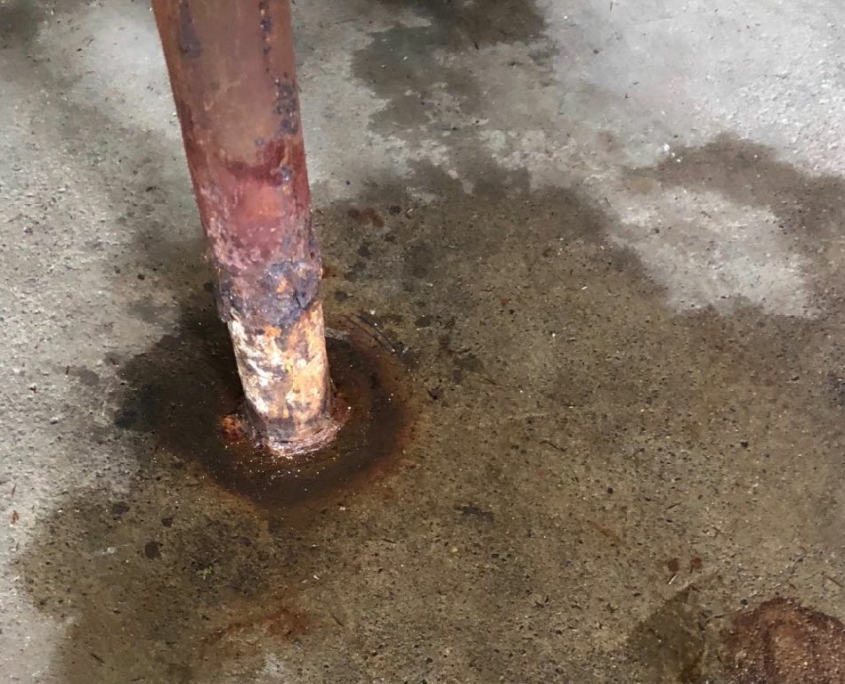Signs of Basement Leakage to Watch For
Leaking basements is not something that’s surprising when found during a home inspection. It’s a common problem. You can predict that all basements will leak at some point. It’s important to know how water is entering your basement when it happens. The first place to look is around the perimeter through the foundation wall because about 90% of leaking basements are caused by surface water. Here are some signs to watch for:
Standing Water
Standing water is the most obvious sign, and at Gain Inspect we make it our job to investigate the source of this water.

It could be that after a heavy rain, ground water is getting in through a crack in the foundation wall. There could be leak in a plumbing pipe. There could also be condensation coming from the HVAC ducts in the basement causing water to pond on the basement floor. However, water may be getting in, when you start to see a flood, it could be that the basement floor drain is filled with debris, therefore not draining water out of the basement. If the basement has a sump pump, it may not be operating properly to drain the water out of the basement.
Staining

When you see staining, you can bet that there has been water in the basement previously. Stains that are on the foundation walls and the basement floor could be old stains or recent stains. Some stains will be wet, and some stains will be dry. It’s important to find out if a stain is an active leak. At Gain Inspect, this is when we would use our moisture meter to find out if a stain is current or an old dry stain from a past leak.
Efflorescence
If you see a whitish mineral “salt” deposit on your foundation wall, this is a sign that water has been coming into your basement.

The crystals that you see on the foundation wall after water has seeped through, is dissolved salts from the masonry or concrete. Crystals are left on the interior wall as the water evaporates.
Rust

If stains have been cosmetically hidden, evidence can be found of water problems by inspecting the base of a steel supporting column for rust. There are other items that can be checked for rust, and that is nails in baseboards and paneling, electrical outlets, or the metal feet on appliances. Where the steel rebar embedded in the walls or floor has rusted, expanded, and broken through, exposing the rebar itself, that is a sign of a major water leakage issue.
Damage to the ceiling

Insulation on the basement ceiling could be installed the wrong way, it happens a lot. The vapor barrier on the insulation should be installed facing the ceiling, not the basement floor. When insulation is installed the wrong way, this creates condensation at the ceiling eventually causing the sub-floor to rot if not corrected quickly. Water could be penetrating the basement through the ceiling due to a plumbing leak in a bathroom or kitchen above in the house.

 bobvila.com
bobvila.com thisoldhouse.com
thisoldhouse.com shermanbridge.com
shermanbridge.com
Leave a Reply
Want to join the discussion?Feel free to contribute!